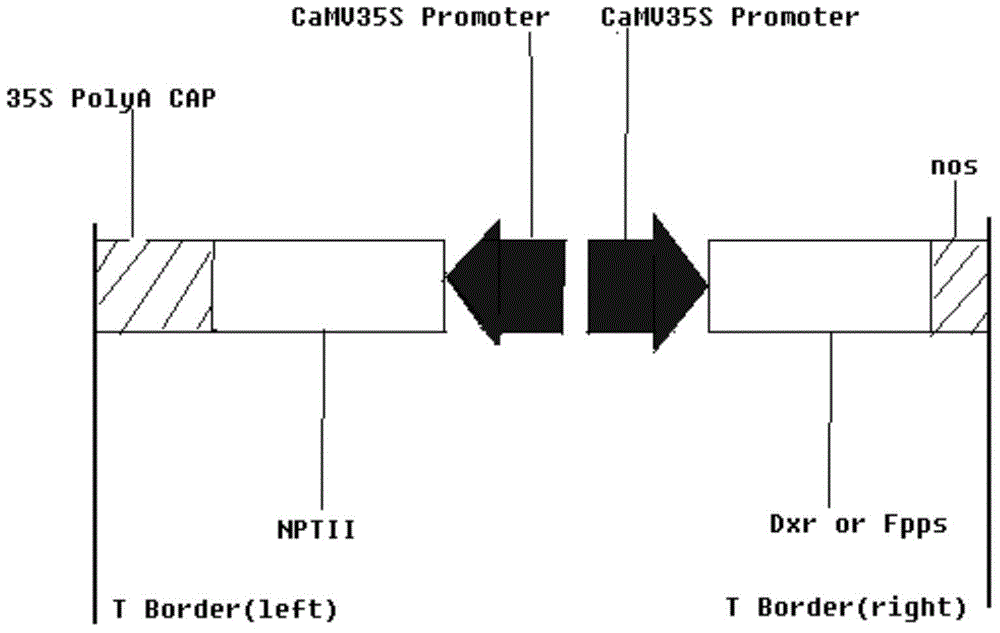Method for cultivating sweet wormwood herb with high artemisinin content by co-transforming genes Anti-Dxr and Anti-Fpps
A technology of co-transformation and artemisinin, applied in the field of genetic engineering to cultivate plants, can solve the problems of low toxicity and limited drug effect
- Summary
- Abstract
- Description
- Claims
- Application Information
AI Technical Summary
Problems solved by technology
Method used
Image
Examples
Embodiment Construction
[0019] The present invention will be further described below in conjunction with the accompanying drawings and embodiments, but it should not be understood that the scope of the subject matter of the present invention is limited to the following embodiments. Without departing from the above-mentioned technical ideas of the present invention, various replacements and changes made according to common technical knowledge and conventional means in this field shall be included in the protection scope of the present invention.
[0020] Materials: The conventional wild Artemisia annua with high artemisinin content was used, which was sourced from Xiushan County, Chongqing in 2008. It was routinely bred for 5 generations in Chongqing Medical College with the goal of high artemisinin.
[0021] Strains and plasmids: E.coli JM109, pMD 18-T vector, plasmid vector pBI121, plasmid vector pCAMBIA2301, Agrobacterium tumefaciens C58C1.
[0022] Enzymes and chemical reagents: DNA Taq polymerase...
PUM
 Login to View More
Login to View More Abstract
Description
Claims
Application Information
 Login to View More
Login to View More - R&D
- Intellectual Property
- Life Sciences
- Materials
- Tech Scout
- Unparalleled Data Quality
- Higher Quality Content
- 60% Fewer Hallucinations
Browse by: Latest US Patents, China's latest patents, Technical Efficacy Thesaurus, Application Domain, Technology Topic, Popular Technical Reports.
© 2025 PatSnap. All rights reserved.Legal|Privacy policy|Modern Slavery Act Transparency Statement|Sitemap|About US| Contact US: help@patsnap.com



